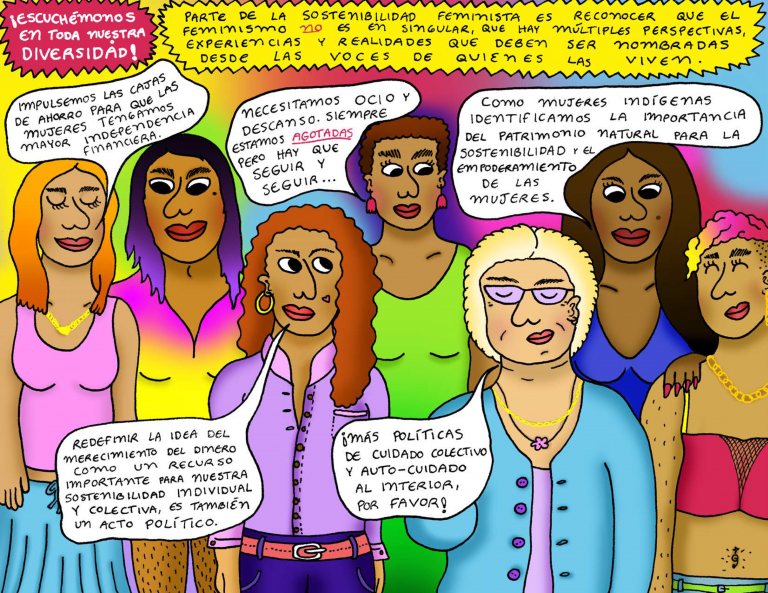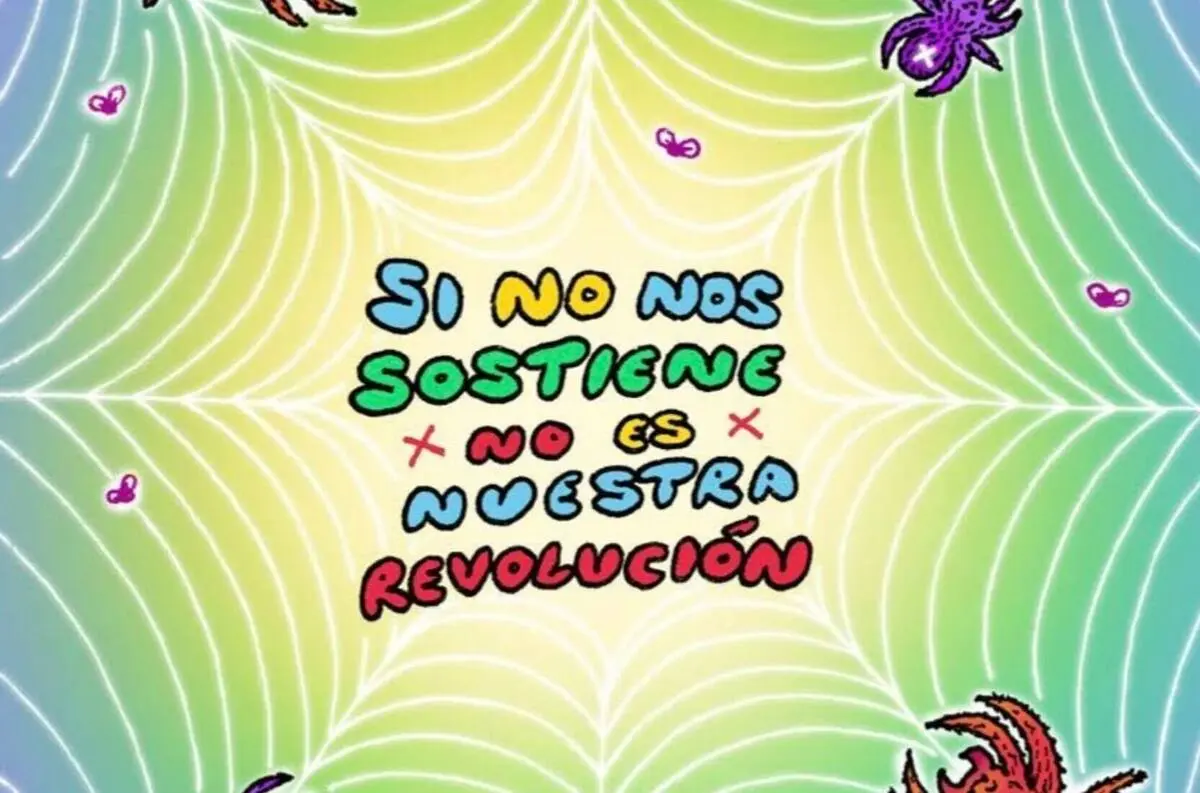Economy, crisis, violence. Crises that did not start two years ago with the pandemic, violence that deepens with the crises. Parts of the same system. We asked Flora Partenio*, how does feminist economics analyze the unequal, pandemic and violent economic system?
Feminist economics alludes to two worlds, the world of finance, the world of debt, the productive world of everyday life, and somehow feminist economics tries to bring these two worlds together.What happens in homes, what happens in houses, has a lot to do with what happens in high finance and in debt processes, because there are precisely links that weave ties to understand that the world of production and the world of reproduction are totally linked”.Flora Parthenius

This perspective is not new, it has been woven since the 70s with debates such as those of Mariarosa Dalla Costa and Silvia Federici around domestic work. They argued that it was essential to recognize domestic chores, caregiving and upbringing, as unpaid work and as part of the exploitation of women.
Feminist economics prompts us to ask ourselves to which bodies care work has been delegated, it challenges us to question what seems normal in the capitalist and patriarchal system. It is a tool that allows us to demand our rights and take to the streets.
The economy resonates with a crisis and generally the crisis is associated with the expansion of inequalities and forms of economic violence.
“What do we allude to with economic violence? Does it have to do, for example, with the lack of access to housing or habitat? Does it have to do with exclusion from the labor market or the fact that I can’t get a job? How does that impact our bodies? How does it impact our day to day, in our relationships, in our ability to support ourselves on a daily basis? Thinking about the crisis from a feminist lens implies exploring how forms of economic violence are linked to other forms of violence, such as patriarchal, sexist, colonial, and patrimonial violence” (Flora Partenio).
Challenge the economic recovery agenda
Challenging the economic recovery agenda from feminisms implies challenging an agenda from the sustainability of life. This is the greatest bet of feminist economics; find a way out of this pandemic crisis, this pandemic economy. Parthenio adds:
- The way out has to be a collective and feminist way out.
- The compañeras who had a worse time with the pandemic have to be at the forefront of the demands and the agenda: migrant compañeras, precarious work, compañeras who are working in private homes, the labor rights agenda, be alert to countries that want to enter into a discussion on labor reform.
Economic justice for women is not only about integrating them into a certain economic model, but also about improving their control over economic resources, access to decent work and control over their own time”.Challenging corporate power, AWID 2016.
Bet on sustainability from activism
There is a very complex diversity of contexts and variants that are connected by apparently invisible threads. We have to find strategies that allow us to ground our relationship with money, philanthropy and other resources. Let’s not lose sight of the fact that the fight is a long race, which is why we need to bet on feminist sustainability .
Feminist sustainability allows us to ask ourselves: What to do with money? That task has to do with pleasure, rest, salaries, self-care, security, dignity and healing. After all, feminist sustainability has to be hopeful!

These are some practices that feminist economics recovers:
- Recovery of ancestral knowledge.
- Fair and sustainable trade.
- Creation of alliances and coordination with local organizations.
- Political incidence processes.
- Discussion processes.
- Knowledge of our rights as women.
- Training processes.
- Solidarity support.
*Flora Partenio (San Miguel, Buenos Aires province, Argentina), a feminist and lesbian militant, is part of the Network of Feminists of the Global South, DAWN, a sociologist specializing in labor studies and a PhD in Social Sciences.
This article brings together the reflections and materials produced from the two presentations of The Cristal ball, on economic justice: Alive, free and debt free, we love each other, part I (with Emilia Reyes) and part II (with Flora Partenio). The illustrations that accompany this article are the creation of Bruno Lange Tamayo (@floresrosxon GI). Part of the content was extracted from the podcast which bears the same name as the papers and which was produced by Eloisa Diez de The Digital Watermelon.

